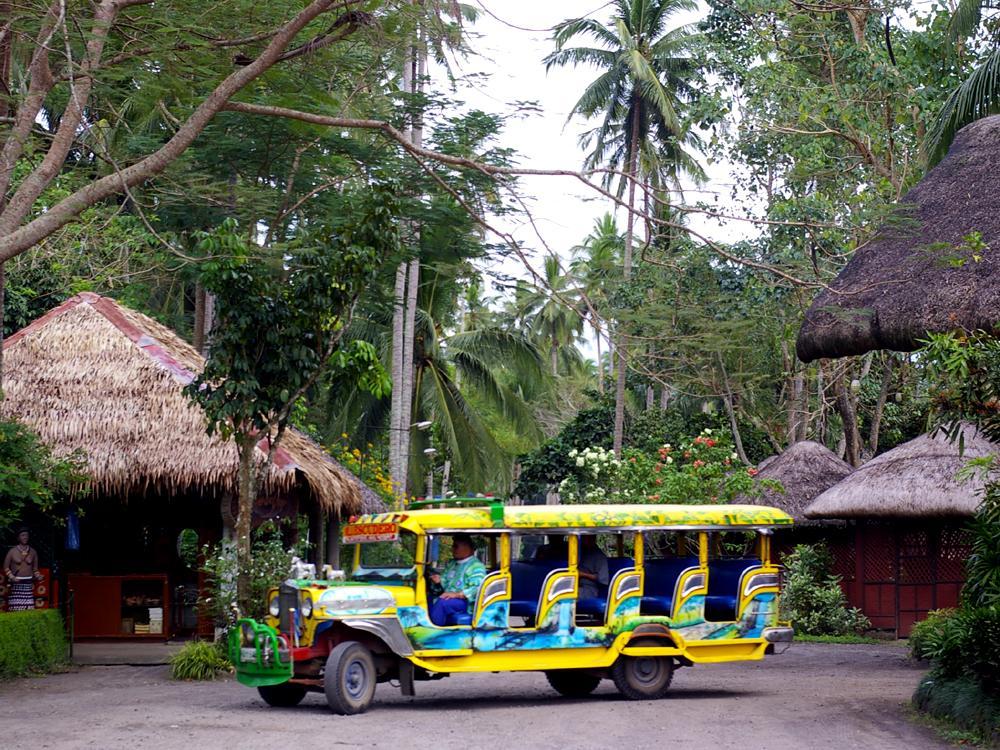
“A self-contained working coconut plantation, it was founded in the 1880s by Don Placido Escudero and his wife Dona Claudia Marasigan. From sugarcane, the crop was converted to coconut by their son Don Arsenio Escudero in the early 1900s. A pioneering agro-industrialist, he built the country's first working hydroelectric plant to supply his dessicated coconut factory and Villa Escudero, where he and his wife Dona Rosario Adap built in 1929.
Their children opened the estate to the public in 1981. From its humble beginnings, the resort has become a prime tourist destination for locals, overseas Filipinos and a wide array of foreign visitors to the country. It has a worldwide reputation as a showcase for the Philippines' rich cultural heritage, offering a beguiling glimpse of its history, cuisine, dress, customs and natural beauty a mere two hours away from Manila.”
- Villa Escudero Official Site
 1. Eat at the Waterfall Restaurant
1. Eat at the Waterfall Restaurant
The waterfall restaurant is the centerpiece of the Villa Escudero Plantations and Resort. You can dine with a mad-made waterfall as your shimmering backdrop. Fresh spring water soaks your feet and you can feel it massaging your muscles. Eating local dishes sure is more enjoyable when surrounded by an astounding work of nature.
2. Ride a Bamboo Raft
Lake Labasin has beautiful sceneries that you can explore by paddling a bamboo raft or “balsa”. See the native houses built along one side of the lake and the vast forest on the other side. You can also try birdwatching while going along this peaceful lake because a lot of birds have considered Villa Escudero their genuine home.

3. Watch the Philippines Experience Show
This unique resort has very talented employees, musicians, and its very own rondalla ensemble. The employees perform ethnic dances like Tinikling, Maglalatik, and Pandanggo sa Ilaw. These dances are interspersed with presentations of our local culture like courtship, fiesta, and cockfighting. Philippine customs and traditions come alive in this very entertaining and versatile performance.
4. Tour the Village
You can tour the rural village by foot, riding a bike, or much better by riding a carabao-drawn cart. The carabao is the Philippine national animal because of its strength and sturdiness. It is used by a lot of Filipino farmers in cultivating their lands. It represents a typical Filipino lifestyle, so you shouldn’t miss trying to ride on it. You can also see the vast coconut plantations and how coconuts are harvested. You can spot some villagers wearing traditional Filipino clothes.
5. Visit the Museum
The AERA Memorial Museum, founded by spouses Arsenio and Rosario Escudero, houses one of the largest collections in the country, unmatched in its eclectic diversity. Housed in a replica of a long-gone church in Intramuros with painted trompe-l'oeil ceilings, the present building opened for viewing in 1987. The core of the collection is its trove of colonial religious art. The superbly executed silver altars, gilded carrozas, ivory statues of saints, embroidered vestments and intricately carved images and bas-reliefs and tableaux, most dating from the Spanish colonial era are a testimony to the artistry and piety of the Filipino. Reflecting a lifetime of dedicated collecting and the wide-ranging interest of the Escudero couple, there are also extensive collections of Oriental ceramics, natural history and ethnographic dioramas, costumes, household furniture, weaponry and many other items of interest collected in their travels around the world.










